
In 2012, I visited Simraungadh, a quintessential Terai town, some 160 km south of Kathmandu. The trip was not planned but a last-minute decision—no more than one of my little quirks. But, much to my astonishment, it turned out the little-known town once prided as a thriving capital city of Mithila kingdom in the 11th century Karnata Dynasty.
After rounding off our pilgrimage to the Gadhimai, a Hindu shrine 20 km northeast of the border city Birgunj, I suggested my wife, Radhika, we pay a visit to Simraungadh, 13 km away. The whole idea of the sudden foray was to dig for clues to my ancestral roots, the early Dolakhes, the people of Dolakha, a hill-town 143 km northeast of Kathmandu.
To Radhika, my idea founded on hearsay (talked about by elders in Dolakha) sounded nothing short of a wild-goose chase. With the puja ritual wrapped up at Gadhimai (the Hindu shrine is also noted for holding the largest animal sacrifice in the world every five years), we drove off to Simraungadh.
Dismal start
We were in for some bad vibes, however. We met a local who told us that only a week ago, a fellow was found murdered on the road to Simraungadh. Another fanned the flames by quipping in that the road cut across some isolated forest stretches was frequented by Indian dacoits. That gave Radhika quite a fright. I thought the inside stories were a trifle exaggerated, if not just gossip. I managed to get her acquiescence reluctantly, though. There were three of us, Radhika, a priest from Gadhimai who kindly volunteered to guide us, and I. I was behind the wheel of our Hyundai Getz.
Our progress on the badly pitted road was slow, almost a crawl at some places. Some sections of the dirt road required weaseling out of a lot of potholes. All this time, as we sped past deserted locales and wooded stretches, an edgy Radhika kept on casting suspicious looks outside the window.
As we drove along, vast swathes of harvest-ready rice fields flanked the road with thin habitation and insignificant motor traffic—all the more reason for Radhika to get worked-up. All we intercepted, less than halfway, was a solitary bullock-cart lurching along the uneven road with gunny sacks piled high.
The archetypal Terai
Radhika sighed in relief as a few motorbikes and trucks passed by kicking up clouds of dust. Soon, we cruised past small shanty settlements with thatched-roofed mud house, some tiled—the kind so typical about the Terai. We saw men and women going about their ways, some walked, others rode bicycles. The most common sight included women ambling along the side of the road with some kind of a load balanced on their covered heads. Curiously, most of the women, old and young alike, wore white dhotis sans blouses.
As we drove on, I noticed roadside clapboard shops on stilts selling all and sundry but with hardly any customer. Mango groves, Jamun (Indian blueberry), and coconut trees dotted the distant fields. The entire landscape gave a sleepy and deserted look.
Everyone gave a curious look at our passing car, even domestic cattle. While people stopped to look, stray cows, buffaloes, and goats turned their heads at us wide-eyed. Some even spooked. Excited children ran along the side of the car. Pariah dogs gave a chase barking furiously.
The smell that wafted through our car windows was distinct– burning leaves and the dung-cakes. A strong pungent smell of molasses, at times, stung our nostrils. There was no mistaking the Terai! Those outer reaches seemed to be under a spell in a timeless past, inching away at its own pace, untouched or undisturbed by the urban boom.
Unusual traffic
After an hour’s dusty ride, we finally arrived in Simraungadh. Nothing looked new, no different from another of those dreary impoverished village towns you see in the terai. The town area boasted a little modernity with crummy tea-houses and shops lining the streets. Modern brick houses and mud hamlets, however, seemed grossly at odds as they huddled together back-to-back.

Squalor and poverty lay behind the town’s incongruous modern façade. The main bazaar bustled with life. Bicycles, rickshaws, motorbikes, tractors, bullock carts, stray animals and occasional tangas (horse-carts) made up the traffic. People milled around amid blaring music belting out Hindi film tunes. Dust and filth appeared all around. Chaos!
After parking our car, we looked around for some help. We wanted to find people who might know about the Dolakhes. I intercepted an elderly dhoti-clad gentleman and asked him. After a quizzical long look at us, he suggested in his broken Nepali we try the main bazaar chowk (square).
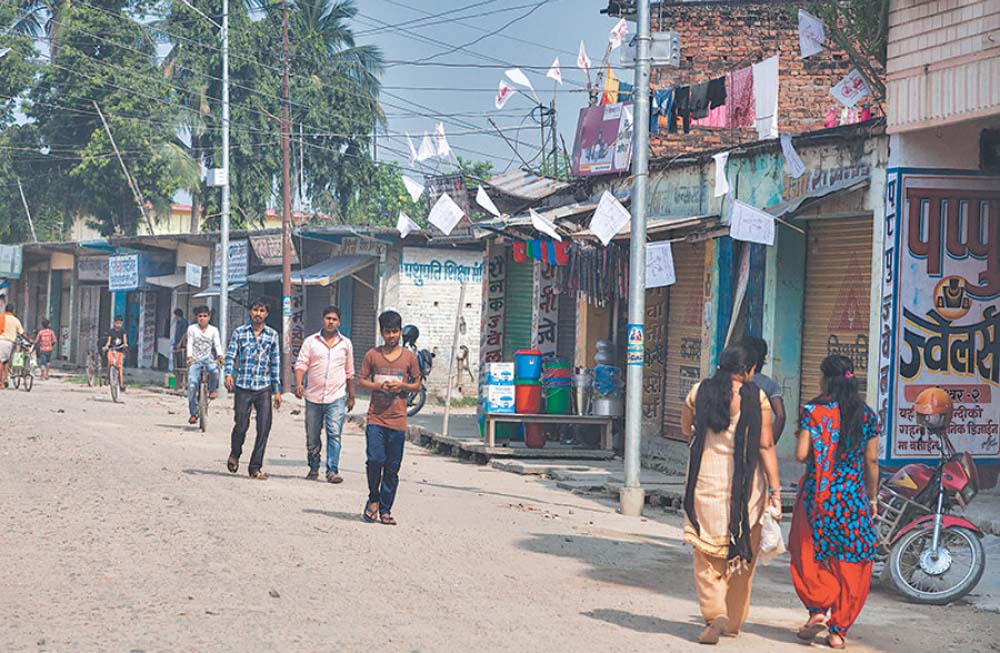
Disappointment
In that part of the Terai, the predominant language was Maithili and Bhojpuri. People seemed uncomfortable at speaking Nepali. At the main bazaar, we approached a young fellow in jeans. He looked like a student but all we got from him was a shake of his head. A skeptical Radhika suggested trying some shops. We did but to no avail. After an hour of running around, the dust, the din, and the noonday sun took their toll on us. We were sweating hard and exhausted.
Then, a glimmer of hope… A middle-aged fellow we met at the bazaar asked us to try a certain street. Off we went looking. Some 15 minutes later, we found it. Much to our consternation, we met a family there from Gorkha, and not Dolakha. Blast it! Our informant must have got confused by the similar-sounding words.
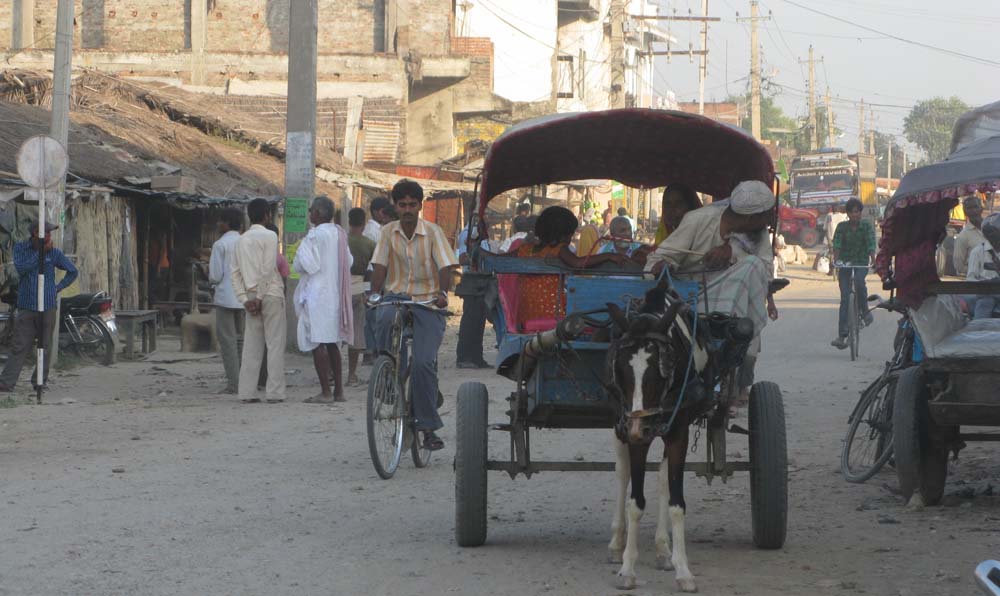
With fallen faces, we tried everything; we met on our way back. Our efforts seemed futile. It was time to quit, I thought. So much for my ancestor-hunting! We decided to take a look around the village-town, though.
Tour of the town
Lunch at a roadside eatery proved far-out. To our amazement, the food was served on newsprint paper—a tingling spicy mutton curry with bhuja (dry-roasted rice grain) with slices of onion and radish. The garnishing included a wedge of lemon and a green chilly. For me, the lunch proved an ordeal since I was not used to fiery hot food.

After lunch, we first visited the Kankali Ishra Mata Shrine. Going by history, it was after 1800 BCE that the Indo-Aryans first started building Hindu temples of worship. The locations they chose were picturesque places. Small wonder: Hindu shrines are found mostly on river banks, hilltops, seashores, by the side of reservoirs, and the like. The Kankali shrine boasted an impressive reservoir on its side, which was said to have been built by King Shiva Singh in the 12th century for his daughter Ishwari Singh. Locals called it the Ishra Pond.
A gaunt bearded fellow, the main priest of the temple, Ram Chandra Das, showed us around the temple site. “Mysteriously, time and again, Goddess Kankali Mai switches her abode to far removed places such as Patna, as Patandevi, to Kolkata as Kali, or Betia, all cities in India’s Bengal and Bihar state,” he said, also shedding light on the myths and legends associated with the deity.

The main temple, a nagara (curvilinear) architecture, housed a three-foot-tall black polished idol of Goddess Kankali Mai—an avatar of Kali, the Hindu goddess of enlightenment and liberation. Curiously, it bore an uncanny resemblance to the idol of Gadhidai we saw earlier at Bariyarpur.
Previously known as Kangankali for the Goddess’s fetish for kangans (bangles), the idol heavily draped in a red shawl and adorned with shiny golden motif, carried the same height and build of Gadhimai.
The idol stood under the extended hood of the mythological Shesh Nag, the thousand-headed cobra. According to Hindu mythology, the Shesh Nag symbolises ‘eternity’ and holds the entire universe on its head. The most striking likeness between the idol at Gadhimai and the Kankali Mai was the large protruding eyes cast in silver.
Only the saffron cloth that draped the Shesh Nag seemed to distinguish them apart. Our guide told us that Gadhimai was an incarnation or avatar of none other than the Kankali Mai.
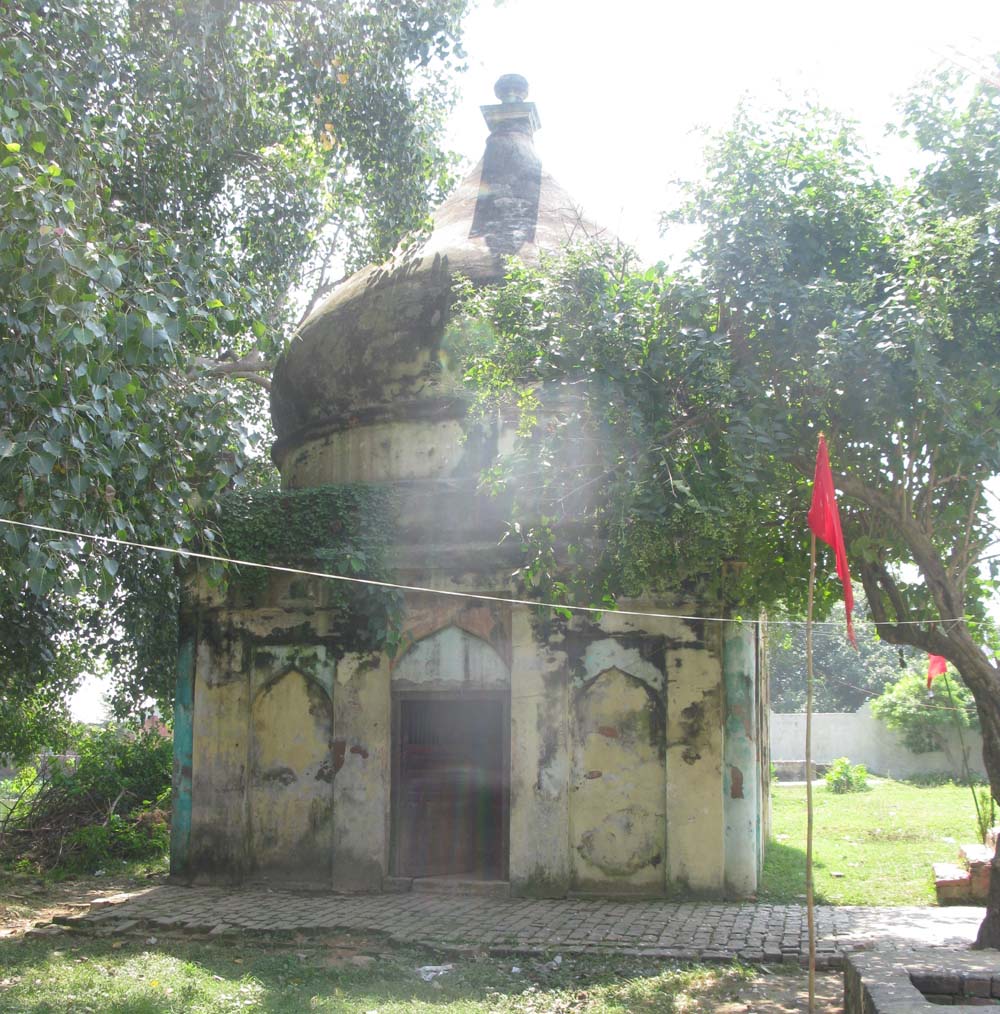
Next to the shrine stood a 700-year-old domed building with a steeple. Its inner sanctum housed the samadhi (tomb) of Mansha Baba, a revered baba, or saint, who was said to have miraculously entered the earth by his divine powers to breathe his last peacefully.
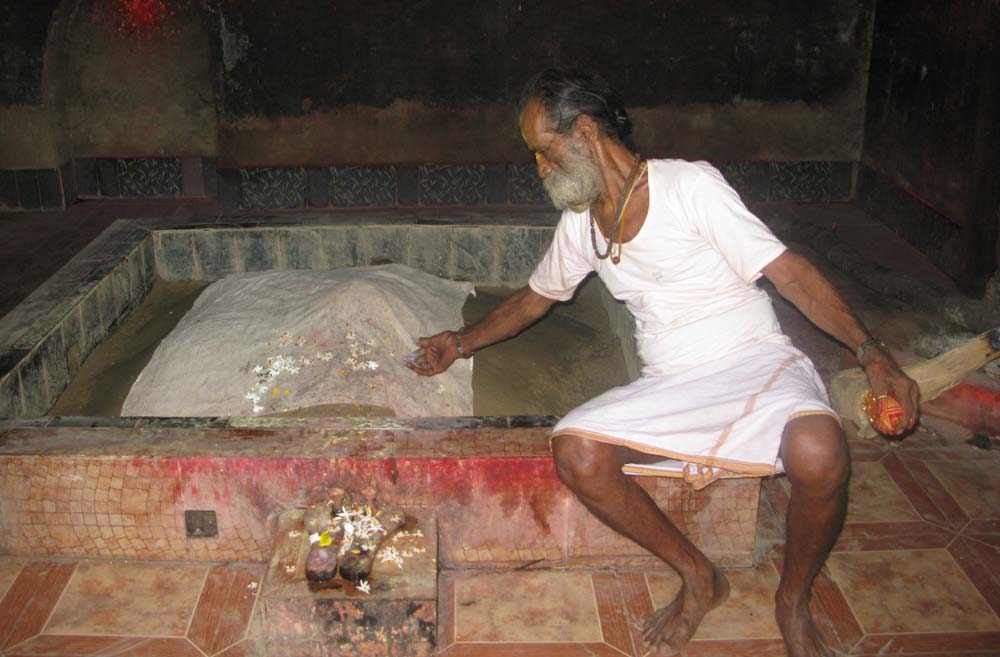
Image: author
History
Recalling Nepal’s medieval history, Simraungadh was the capital city of Mithila kingdom (also called Tirhut) in 1097 AD. The Mithila region was bounded by the Mahananda River on the east, the Gandaki on the west, the Ganges on the south and the Himalayas on the north, spreading over half of present-day Bihar State, India. Mithila finds its mention in the sacred Hindu epic Ramayana by Valmiki, too.
The Karnataor Samaroon dynasty was founded by the King of Bengal, Nanyadev in the 11th century. He first ruled Mithila. His successors reigned over Mithila for more than two centuries. The regime ended with the 5th successor, Harisimha Deva (1295-1324 CE) following an invasion of Mithila by the Mughal warrior Ghias-Ud-din Mohammad Bin Tughlak in 1324-25.
Simraungadh was razed to the ground following the siege. King Harsimha Dev and his family fled north into the hills and remained in hiding. Then, with his entourage, he left for Dolakha but died on the way at a place called Tinpata in Sindhuli. There are no two opinions about Harisimha Dev’s flight. Both Nepal and Mithila vaṃśāvalis (genealogies) support it.
However, speculations run high over Harisimha Dev’s post-flight period, and it is the issue much debated amid historians. Some claim King Harisimha Deva, under a refugee status, entered the Nepal Valley (also called Nepal Mandala—Bhadgaon, Kantipur and Lalitpur) around the beginning of the 14th century. Others maintain that he even ruled the Nepal Valley.
The inscription erected at Hanumandhoka by King Pratap Malla (1641-1674 AD) illustrates how Harisimha Dev came to Ashmanagar (Panauti), and then to Nepal Valley. A similar account by Pratap Malla is also to be found at the Pashupatinath inscription. History pages also mention that the Tulaja Bhawani deity was brought to Nepal Valley by Harisimha Dev from Simraungadh. The Malla Kings came to adopt and revere it as their tutelary deity.
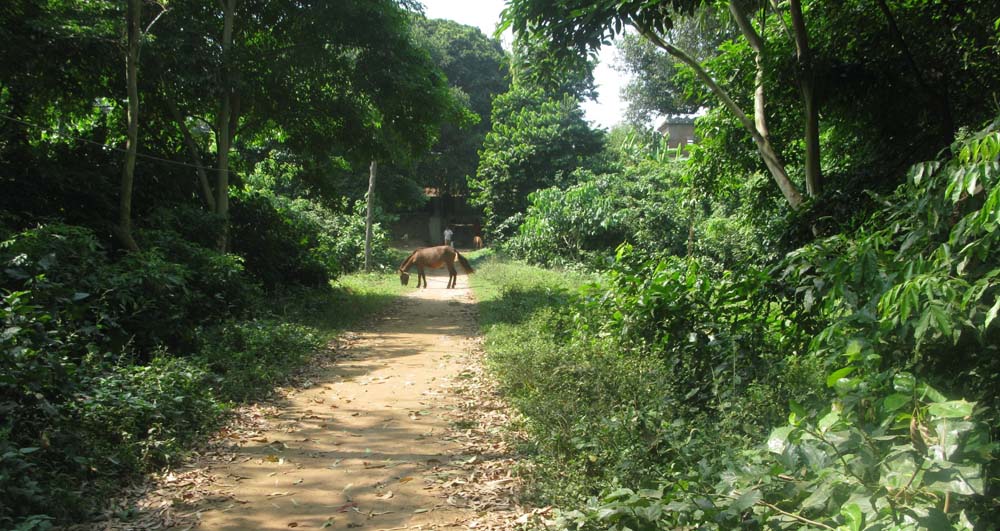
Ranibas
Our last visit included the Ranibas, the residence (bas) of the queen (rani).The palace was built by the Karnata King Shiva Singh in the 12th century for his daughter Queen Isri Devi. The site later came to be converted into a Ram-Janaki Hindu shrine.
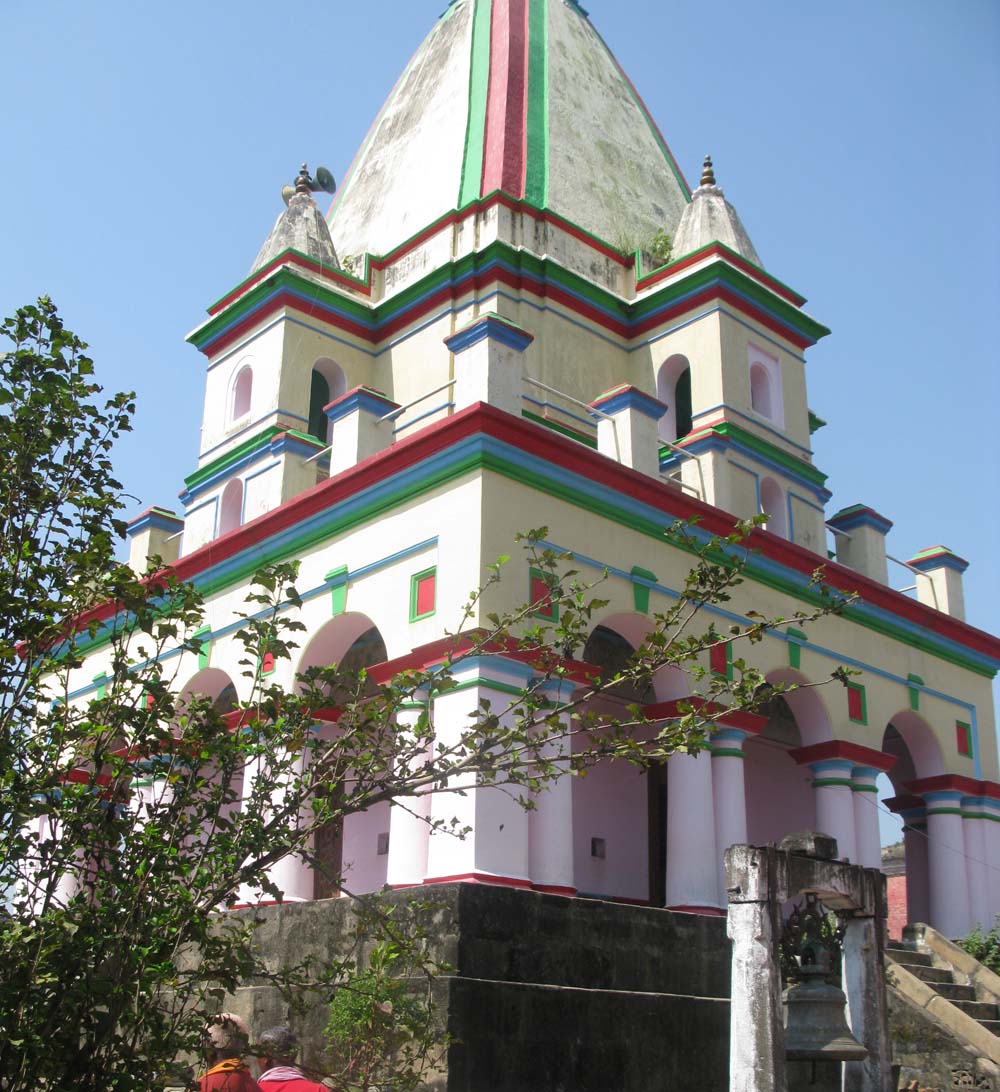
History records that in the 1850s (AD), Prime Minister Jung Bahadur’s son General Jit Jung Rana built the temple in memory of his father. Flanked by thick brush, the narrow path that led to the temple opened on to a wide forecourt with a huge gnarled kabhro tree (a kind of fig tree that bears wild fruit used for making pickle). A mango orchard lay next to it.
A flight of steps led to the entrance of a square, two-storied tin-roofed brick structure—said to be the living quarters that surrounded the temple premises. Closely similar to the Kankali temple but much larger and imposing, the two-storied structure was painted in vibrant colors and stood high on a raised platform.

The interior of the temple housed idols of Ram, Sita, and Laxman, three of the mythical gods from the Hindu Ramayana epic. They all sat in a row, while statues of Jung Bahadur Rana, his wife, and son Gen. Jagat Jung, knelt before them with folded hands.
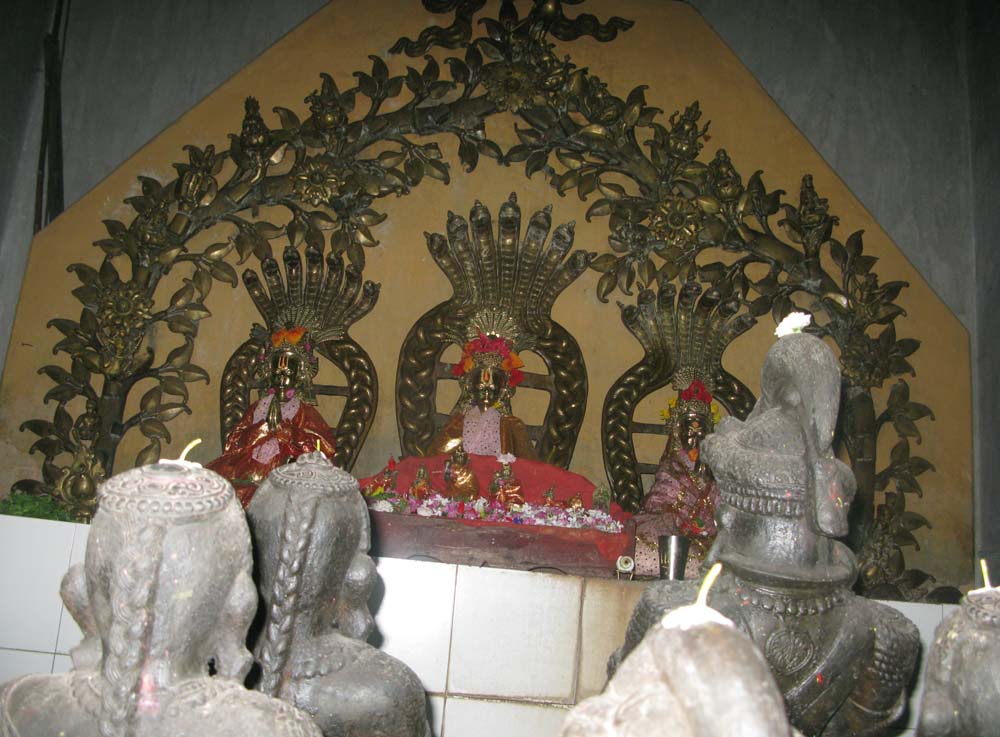
Two large metallic bells, said to have been added to the shrine by Jagat Jung, bore inscriptions dated BS 1933 (1876 AD). In the foreground of the temple, a big statue of Hanuman, the Hindu monkey God from Ramayana, sat on a raised pedestal. “The shrine attracts a capacity crowd of worshippers every year on the day of Ram Navami (birthday of Lord Ram),” informed a local guy.
The courtyard held an ancient well. Stone relics lay in some disarray at a corner of the courtyard. The living quarters for pilgrims girdling the temple appeared in a pitiably run-down state with the walls falling apart. It was clear the premises were sorely neglected.
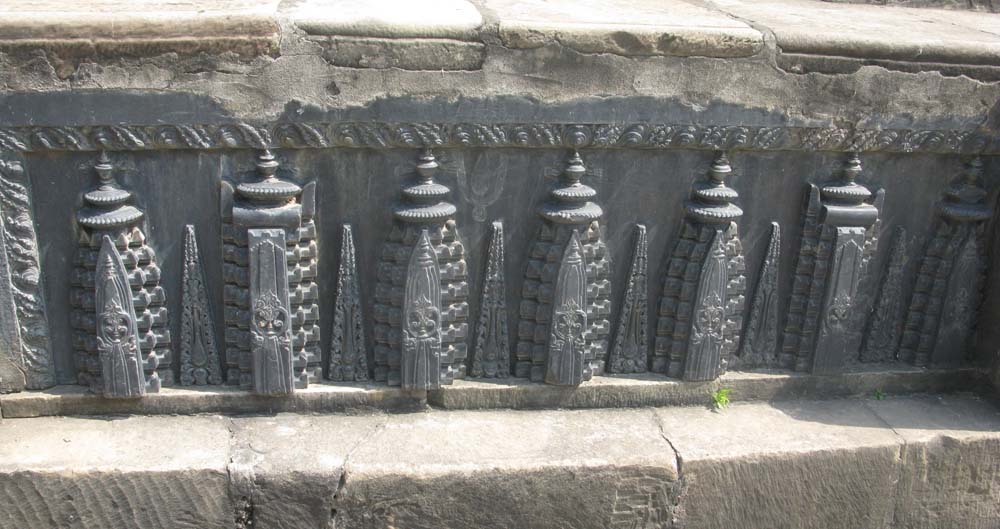
A pond, said to belong to the olden days, was located on the western periphery of the temple. “The Ranibas used to boast 208 wells and as many lotus ponds, but most are buried, some dried up, and only a handful remains now,” said Anirudra Mishra, a priest at the shrine.


Buried Kingdom
We tried in Simraungadh to locate some ruins that bore the barest testimony to its glorious past. Save for some relics at Ranibas, the locals, however, failed to point even to stray old lumps of bricks that once belonged to the last king’s palace or that fortified the high walls of the old city.
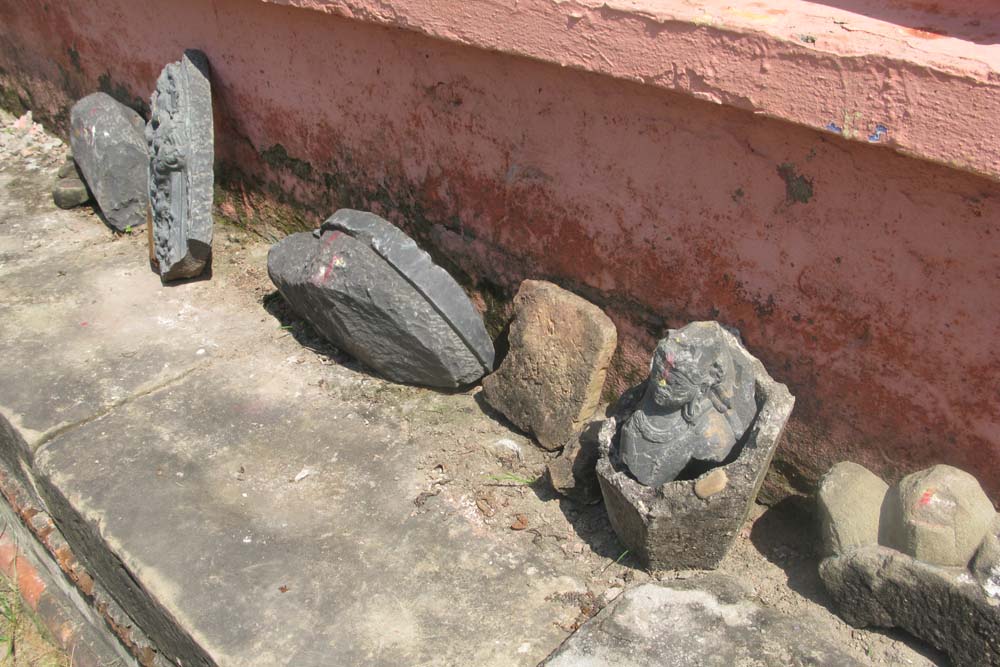
It looked nothing remained, which evoked some faint images of the erstwhile Kingdom. A local fellow, however, told us that if dug up no deeper than a few feet any place around the 28 sq-km area of the old city, it would fetch medieval-era artifacts and earthen pots. Nay even gold and silver!
Legends, myths, and history spoke loud and clear about Simraungadh’s vibrant past. But on completion of our tour, it was hard to believe that the dusty and dreary little town revelled once as the capital city of a booming medieval kingdom ruled by a sagacious Karnata King. As it stands, the kingdom lies buried into the bowels of the earth.
Images by the author, except the opening one.


















